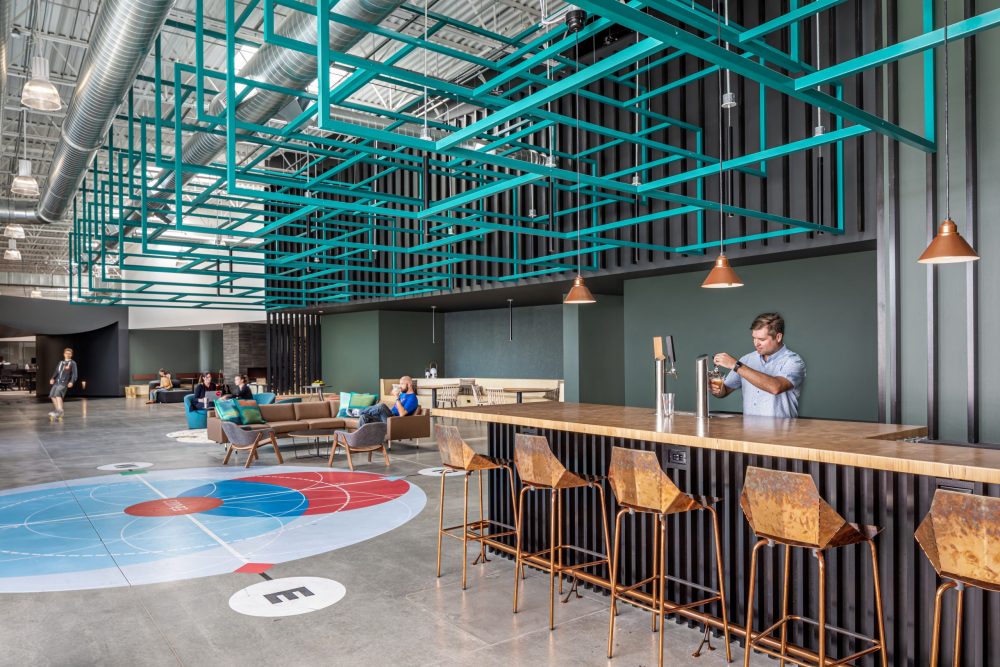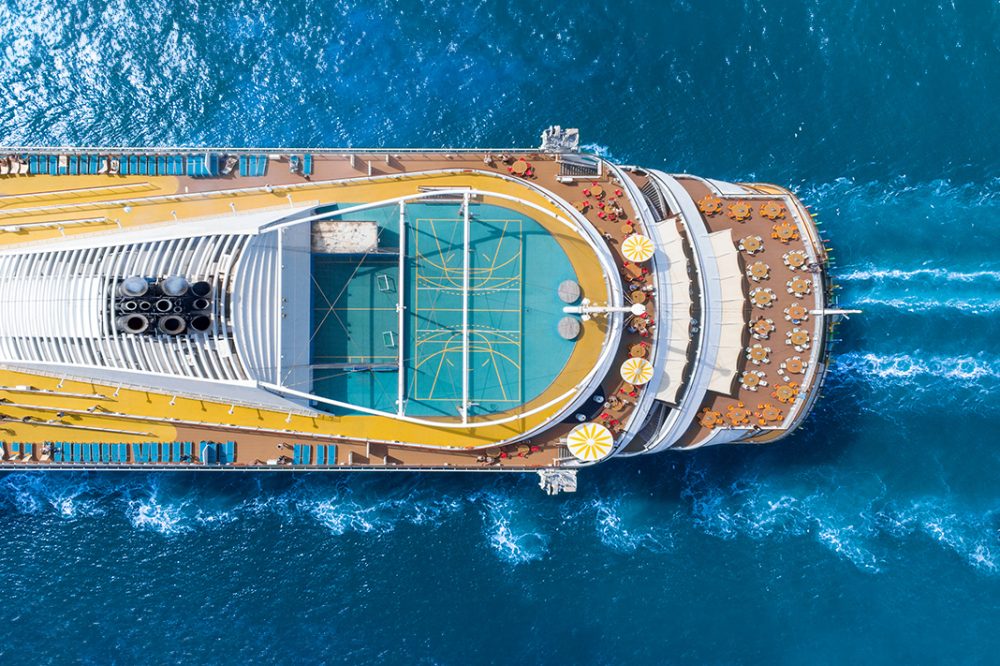Art Bloodworth of DLR Group discusses his recent cruise experience and how the workplace can set sail by implementing some of the design and engagement concepts found on the high seas.
Who doesn’t love a comeback story? After navigating a big shift post-pandemic, the cruising industry rebounded better than before and now expects to exceed pre-pandemic passenger attendance in 2024. From luxury micro-cruisers and mega ships to themed or adventure ships, the cruising industry has evolved to compete with other modes of travel by focusing on what the consumer wants most – a highly customized, all-inclusive adventure that travelers can’t find anywhere else.
Workplaces are also evolving. Time spent in the office is at the forefront of many corporate leaders’ minds as the workplace competes for employee’s time and engagement. With the rising rate of return to office policies set in place over the past two years, creating office environments that compete with the flexibility and comfort of remote work is a top priority for corporations across all industries. There is significant focus on creating intentional spaces where employees feel seen.
While cruise ships and the workplace seem to be worlds apart, there are similarities in many underlying experiences. Recently, I boarded a new, mid-sized ship for my very first cruise experience. As a self-avowed ‘never cruiser,’ I relented to the invitation from my sea-seasoned friends. However, I must admit I was struck by not only the over-the-top entertainment and dining options, but also many unexpected aspects of the ship. This experience got me thinking about the similarities in the modern workplace and what we can learn from these entertainment experts.
From the all-inclusive, high-end accommodations with a wide variety of social zones to curated enclaves for relaxation and retreat, let’s take a few pages from the cruise industry’s playbook and explore trends that will enrich the workplace experience for all employees.
Hooked on a Feeling

Experiential design is exemplified throughout the modern cruise ship. Careful attention is given to how each space makes users feel. Hospitality driven design results in engaging spaces throughout the ship that evoke a certain feeling, inspire an activity or support relaxation and mindfulness. Skillful application of color theory, sound introduction or mitigation, lighting design as well as access to outdoors, to daylight and specific furniture types support each area’s intended function.
A hospitality inspired office design approach has proven successful as it creates a distinctive and meaningful aesthetic while supporting the activities and needs of employees. Design success is found by striking a balance between the vibe and the work modality. An intentional integration – or absence – of technology will ensure the spaces will contribute to the staff’s workflow or act as a place to be social or offer a chance to recharge.
Choose Your Own Adventure

Comparable to the concept of a floating city, today’s modern cruise ships offer infinite options for every traveler to choose their own adventure. From outdoor parks and green space, various aquatic experiences, convenience stores, running tracks, gaming courts, casinos and a mix of restaurants, bars, food halls, quiet libraries, spas and game rooms, cruise ships provide not only everything that passengers need, but also plenty of surprising elements along the way.
In the same way, employees want options in the workplace that make them feel appreciated, supported and offer a sense of purpose or belonging. When they are given a similar map of choices to support their workday, it often leads to higher satisfaction, engagement and productivity. Through design, we can approach this by looking at what types of spaces will best support each function of the workday. Whether that’s open or semi-private collaboration spaces, cafes that double as meeting and presentation zones, lounge meeting rooms, hidden huddle enclaves, open desk areas or private focus rooms – well-designed variety is key. Providing a diverse set of options equipped with the right furniture and technology adds value to the workplace that employees cannot get while working elsewhere.
Showcase Your Why

Cruises, like the workplace, are experiencing generational shifts with millennials and Gen Z passengers accounting for over 20% of all cruisers, according to Cruise Lines International Association. The values of these generations are driving changes in the cruising industry, with an emphasis on sustainability and eco-friendly solutions to preserve the integrity, cultural heritage and beauty of the world’s most treasured destinations for future generations.
Many cruise lines are now focused on reducing carbon emissions, increasing energy efficiency and investing in responsible and sustainable tourism that provide travelers with a deeper connection to the places they’re visiting. This is an important issue to explore with all of our workplace clients. A climate action strategy should be part of every design kick off. And finding subtle and bold ways to indicate and celebrate these values and achievements makes for a richer project design and rewarding user experience.
Further connecting travelers to place through design, cruise ships often integrate expansive art collections that feature local artists from each of the ports and history of the ship. During my recent cruise, there was a recurring show in a Ted Talk style format that took passengers on an experiential journey through the cruise line’s long history that began as a trans-Atlantic passenger steamship and evolved into a leading cruise line. I left the production feeling more connected to the cruise company and their mission and believe that this experience enriched the rest of my time on the ship. Similarly, interactive design elements and experiential installations in the workplace that creatively convey a company’s values and culture offer a deeper form of connection and engagement for employees and visitors.
Though many travelers cite the destination cities as a reason to book a cruise, a surprising number of passengers end up coming back to the ships again and again due to the curated experiences and lasting memories made on board. According to a recent State of the Cruise Industry poll, 85% of people who go on a cruise return for another. And as the number of younger cruisers continues to increase, the design shifts happening at sea have much to inform us designers on land.
The workplace of the future should continue to be highly customized and hyper-focused on the user journey. By focusing on creating unique spaces that meet the diverse needs of employees and workstyles, foster meaningful connections and create memories, the modern office will continue to be a valued hub for the highest level of productivity and engagement.

